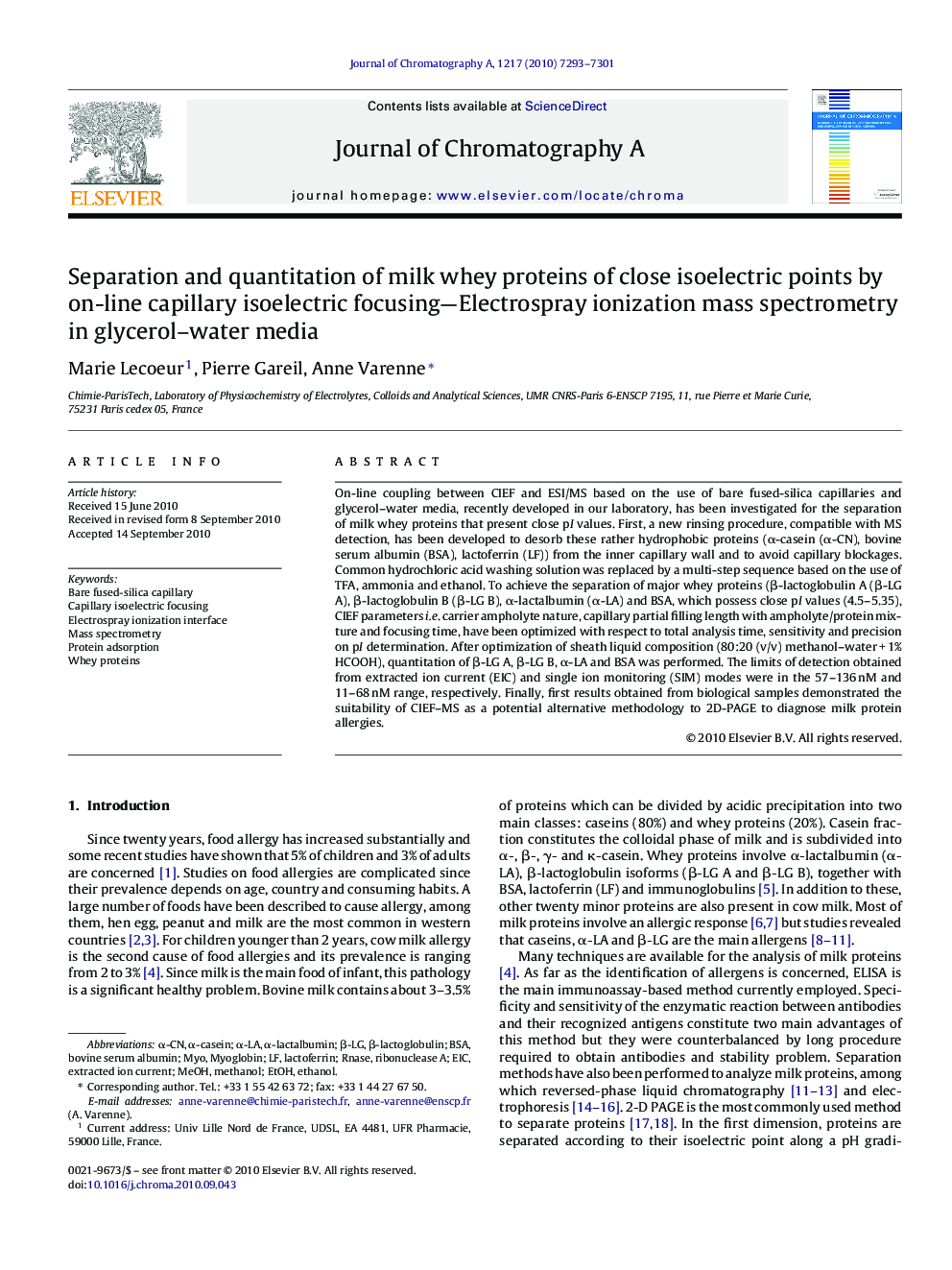| Article ID | Journal | Published Year | Pages | File Type |
|---|---|---|---|---|
| 1203788 | Journal of Chromatography A | 2010 | 9 Pages |
On-line coupling between CIEF and ESI/MS based on the use of bare fused-silica capillaries and glycerol–water media, recently developed in our laboratory, has been investigated for the separation of milk whey proteins that present close pI values. First, a new rinsing procedure, compatible with MS detection, has been developed to desorb these rather hydrophobic proteins (α-casein (α-CN), bovine serum albumin (BSA), lactoferrin (LF)) from the inner capillary wall and to avoid capillary blockages. Common hydrochloric acid washing solution was replaced by a multi-step sequence based on the use of TFA, ammonia and ethanol. To achieve the separation of major whey proteins (β-lactoglobulin A (β-LG A), β-lactoglobulin B (β-LG B), α-lactalbumin (α-LA) and BSA, which possess close pI values (4.5–5.35), CIEF parameters i.e. carrier ampholyte nature, capillary partial filling length with ampholyte/protein mixture and focusing time, have been optimized with respect to total analysis time, sensitivity and precision on pI determination. After optimization of sheath liquid composition (80:20 (v/v) methanol–water + 1% HCOOH), quantitation of β-LG A, β-LG B, α-LA and BSA was performed. The limits of detection obtained from extracted ion current (EIC) and single ion monitoring (SIM) modes were in the 57–136 nM and 11–68 nM range, respectively. Finally, first results obtained from biological samples demonstrated the suitability of CIEF–MS as a potential alternative methodology to 2D-PAGE to diagnose milk protein allergies.
